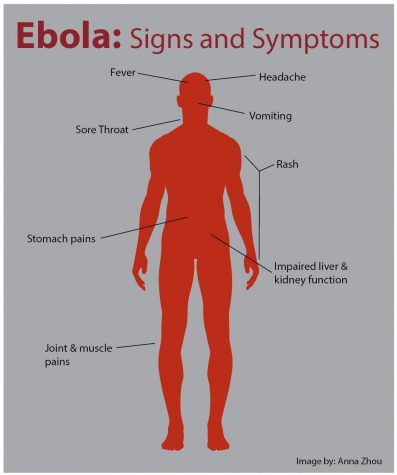Ebola outbreak creates global emergency
November 3, 2014

Severe headaches. Nausea. Uncontrollable bleeding. These are just a few of the symptoms of Ebola hemorrhagic fever.
Named after the Ebola River, where the virus was first recognized in 1976, Ebola is a filovirus that has four known strains. Three of these strains, Zaire, Sudan, and Tai, cause severe illness in both humans and animals. The fourth strand, Reston, does not affect humans.
In addition, another filovirus, Marburg, has symptoms very similar to those of Ebola, however, Marburg is not a strain of Ebola.
Since the discovery of the virus in 1967, several small outbreaks have occurred in Africa. However, the world is now faced with the largest Ebola outbreak in history.
The outbreak began on March 22 when Guinea confirmed 50 deaths caused by the Ebola virus. Despite its African origins, the virus has affected the United States as well. In early August, two American missionaries in Africa were infected with the virus and flown to Emory University for treatment. Both were released Aug. 21 virus free.
Since then, two more Americans have contracted the virus. They have been flown to the United States for treatment.
Five months after the beginning of the outbreak, the death toll has exceeded 2000 and over 4,000 people have been infected in six countries.
To learn more about the Ebola outbreak click here






